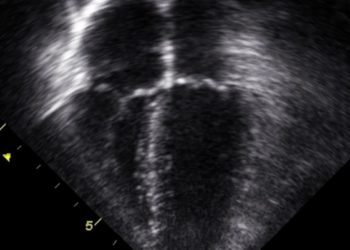A new genetic test for susceptibility to dapsone hypersensitivity syndrome
Image: PD
1. The HLA-B*13:01 allele was strongly associated with dapsone hypersensitivity syndrome.
2. The presence of the allele is 85.5% sensitive and 85.7% specific for dapsone hypersensitivity syndrome.
3. The allele is more common in Asians.
Evidence Rating Level: 3 (Average)
Study Rundown: Dapsone is an antibiotic used in the treatment of leprosy and Pneumocystis jirovecii pneumonia. It is also used in the treatment of some autoimmune inflammatory diseases such as dermatitis herpetiformis and certain forms of lupus, though the mechanism of its anti-inflammatory action is not well understood.
Dapsone is known as a trigger for hemolysis in G6PD-deficient individuals. However, it can also cause a serious drug-induced hypersensitivity syndrome in about 1% of treated individuals. Dapsone hypersensitivity syndrome (DHS) is characterized by fever and rash with involvement of other organ systems, often the liver. Mortality from DHS is estimated to be 10%.
In this paper, the authors perform a genome-wide association study (GWAS) to find polymorphisms associated with susceptibility to DHS among Chinese individuals treated with dapsone for leprosy. They found that the HLA-B*13:01 allele is strongly associated with susceptibility to DHS.
Click to read the study, published today in NEJM
Relevant Reading: The Dapsone Hypersensitivity Syndrome revisited: a potentially fatal multisystem disorder with prominent hepatopulmonary manifestations
In-Depth [genetic association study]: In the GWAS, genetic data from 39 case patients who had survived DHS were compared against genetic data from 833 control patients who had also received dapsone for treatment of leprosy. Of note, the DHS status of the controls could not be confirmed due to insufficient medical records. This reduced the GWAS’s ability to detect weaker associations. Nevertheless, over 90 significant associations were found in the MHC region of chromosome 6. Among these, statistical analyses revealed the HLA-B*13:01 allele as the primary risk factor for DHS. The odds ratio for having the risk allele among DHS patients vs. non-DHS patients was 21.67 (95%CI: 10.41- 45.12; P=2.04×10-16). This result was replicated by sequencing the HLA-B loci in 37 additional cases and 201 controls (odds ratio 23.54; 95% CI: 8.71-63.62; P=4.74×10-10).
The HLA-B*13:01 allele was present in 65 of 76 cases and 148 of 1034 controls. Thus, the presence of the allele is 85.5% sensitive and 85.7% specific for development of DHS. Assuming a prevalence of 1.4%, the HLA-B*13:01 allele would have a positive predictive value of 7.8% and a negative predictive value of 99.8%. Thus, 84 people would need to be screened in order to prevent one case of DHS.
The authors also sequenced 1944 healthy individuals to determine the frequency of the HLA-B*13:01 allele in the Chinese population. The frequency ranged from 3.3% to 8.6% in three different provinces of China. Previously published estimates suggest that the allele is absent in Europeans and Africans and ranges in frequency among Asians: 1.5% in Japanese individuals, 1 to 12% in Indians, 2 to 4% in Southeast Asians, 2 to 20% in Chinese individuals and 28% in Papuans and Australian aborigines.
By Tomi Jun and Adrienne Cheung
More from this author: Early risk factor for progression of cystic fibrosis identified, Gut microbes implicated in stroke and heart attacks: new dietary link, New leukemia mutation offers therapeutic targets, Childhood ADHD associated with increased risk of suicide, A marker of aggressive liver cancer and potential therapeutic target identified
© 2013 2minutemedicine.com. All rights reserved. No works may be reproduced without expressed written consent from 2minutemedicine.com. Disclaimer: We present factual information directly from peer reviewed medical journals. No post should be construed as medical advice and is not intended as such by the authors, editors, staff or by 2minutemedicine.com. PLEASE SEE A HEALTHCARE PROVIDER IN YOUR AREA IF YOU SEEK MEDICAL ADVICE OF ANY SORT.





